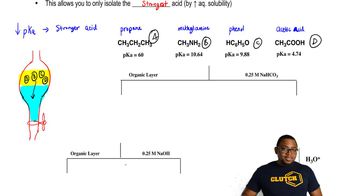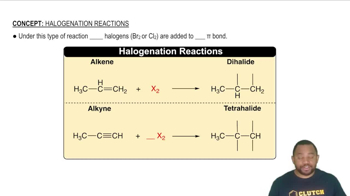Here are the essential concepts you must grasp in order to answer the question correctly.
Ozone Layer Depletion
The ozone layer, located in the stratosphere, protects Earth from harmful ultraviolet (UV) radiation. Depletion occurs when ozone molecules are broken down by chemicals, particularly chlorofluorocarbons (CFCs) and halons, which release chlorine and bromine upon exposure to UV light. Understanding the mechanisms of ozone depletion is crucial for assessing the impact of various substances on this protective layer.
Recommended video:
Halogenated Compounds
Halogenated compounds, such as CFBr3 (trifluorobromomethane), contain halogen atoms (fluorine, chlorine, bromine, iodine) that can participate in chemical reactions leading to ozone depletion. Bromine is particularly effective at destroying ozone, as one bromine atom can break down thousands of ozone molecules. Recognizing the role of these compounds is essential for evaluating their environmental impact.
Recommended video:
Atmospheric Chemistry
Atmospheric chemistry studies the chemical composition and reactions occurring in the atmosphere, including the interactions between pollutants and natural components. It is vital for understanding how substances like CFBr3 behave in the atmosphere, their potential to contribute to ozone depletion, and the broader implications for climate change and environmental health.
Recommended video:
 Verified step by step guidance
Verified step by step guidance

